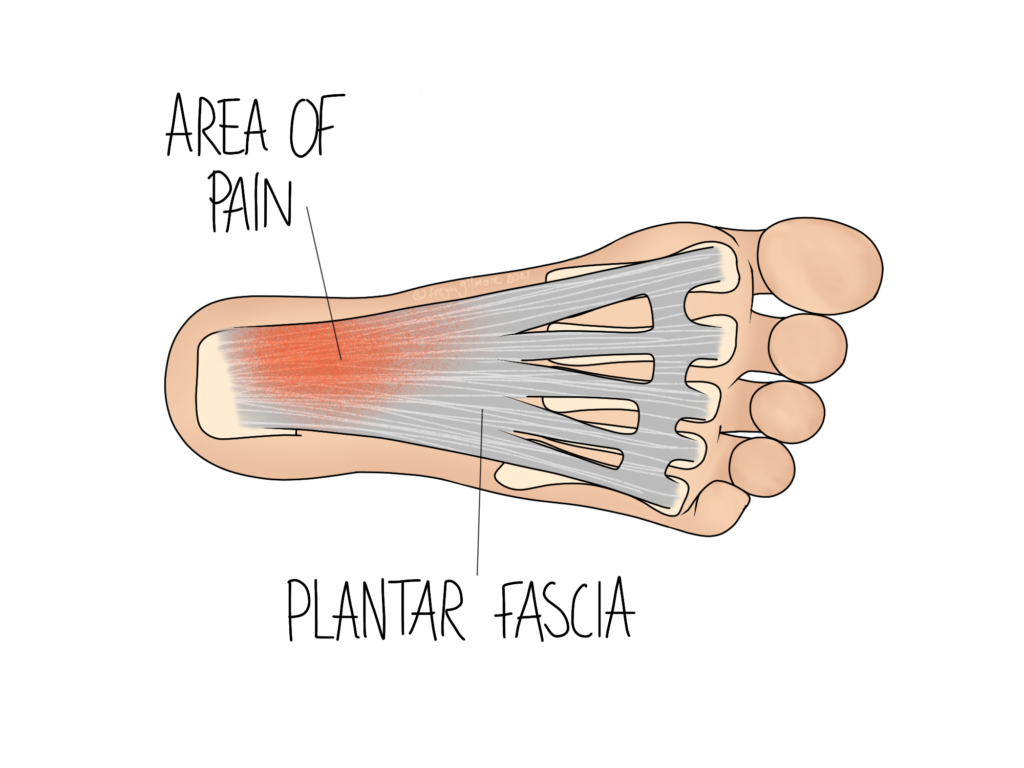The plantar fascia is the tendinous tissue on the sole of the foot. Plantar Fasciitis suggests inflammation of this tissue, although recent research shows that the symptoms are more likely to be caused by other factors.

Signs, Symptoms, and Demographics
Pain is typically focused around the heel area illustrated above. It may be described as a deep ache or a stabbing pain, and is typically worse while, and immediately after, weight bearing.
It most often affects those between 40 and 60, but is a common condition that can affect anyone. People with a high BMI are more likely to be affected than the average person. However, very athletic people (especially runners) are also at risk of developing the condition.
Causes of Plantar Fasciitis
Factors above aside, plantar fasciitis boils down to overuse. This may be more likely if you’re walking or running more than usual, especially if this change is quite sudden. Hard, high heeled, or unsupportive footwear are not ideal. Flip flops that encourage the foot to “grab” should be considered too. Hard floors can further magnify the risks, which is a particularly significant factor in Dubai.
As a general rule, ideal shoes have:
- a small lift at the heel to avoid being totally flat
- a heel that is low enough that it doesn’t hold the foot in a tense position, nor encourage the foot to slip forward into the toe of the shoe
- soles that are soft enough to absorb shock and spread pressure well over the foot
- secure fastening so the toes do not need to scrunch up to keep the shoe on
When increasing activity levels, change should be gradual. Ideally, exercise should be done little and often to avoid overworking the body and to allow it time to heal in between.
Management
Managing the condition may involve a two pronged approach: addressing the causative factors and helping the body to distribute forces more evenly. Altering footwear and activity may be enough to mitigate the external causes. A combination of exercises and hands on treatment will likely make up a lot of the second prong. Some people find that rolling a frozen water bottle under the foot is relieving, although as the condition is non inflammatory, it is more likely the massaging effect that gives relief than any anti-inflammatory effects of the ice.
As your Osteopath, I will usually look beyond the foot and ankle too. Often I find that the calf muscles are particularly tight, and in some cases this may have an effect on the whole body’s posture. Tension in the calf may be in response to a centre of gravity that is too far forward. You might be surprised how treating the upper or lower back can change this. Do bring your shoes along to your appointment if you think they might play a role in your discomfort. They may be useful in the assessment and in advising you of shoes that may be more appropriate.
Click here to make an appointment for your foot pain in Umm Seqeim.
